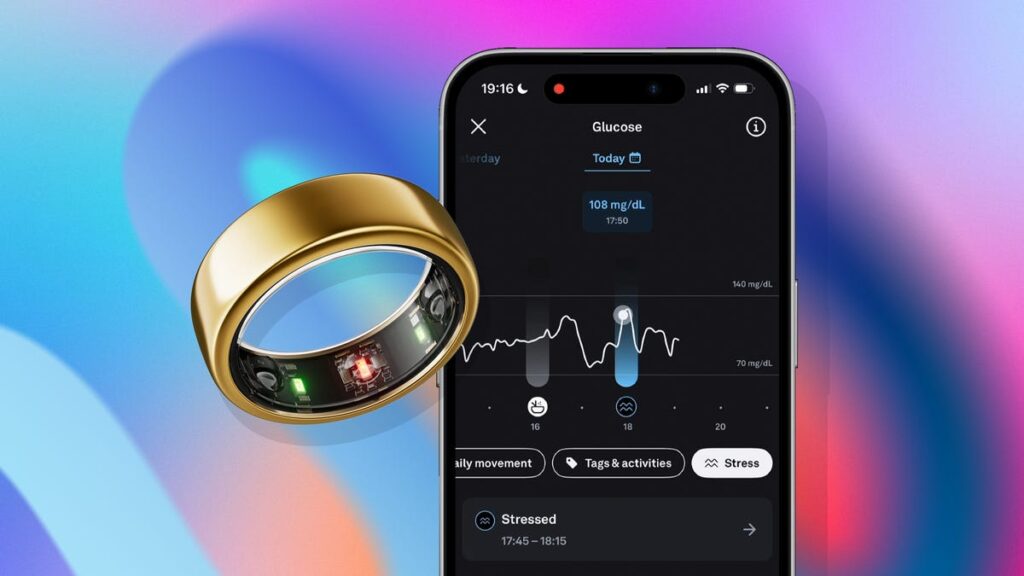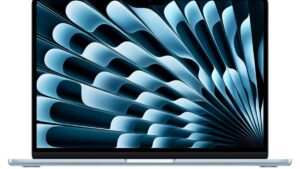
For years, the Oura Ring has been a staple in the world of wearable health technology, lauded for its ability to track sleep, recovery, and stress. Recently, it has expanded its capabilities to include blood sugar monitoring, thanks to a partnership with Dexcom’s Stelo, a continuous glucose monitor (CGM) designed for non-diabetics. This collaboration aims to provide insights into how dietary habits impact blood sugar and overall health.
“By combining Stelo data with Oura’s existing insights, we’re empowering members to better understand the cause-and-effect relationships between eating patterns, energy, mood, and recovery — and ultimately make sustainable, science-backed lifestyle changes,” said Maz Brumand, vice president of product for Oura, in an interview with CNET.
After testing the Stelo CGM with the Oura Ring for two weeks, I discovered significant changes in my eating and movement habits. This biofeedback tool is not just for those with diabetes; it offers valuable insights for everyone.
Understanding Continuous Glucose Monitoring
Blood sugar, or glucose, is the primary energy source for the body, fueling muscles, the brain, and cells. When consuming carbohydrates, glucose levels rise, prompting insulin release to manage sugar distribution in the body. Even without diabetes, frequent glucose spikes or crashes can affect energy, sleep, mood, and long-term metabolic health.
Continuous glucose monitoring has traditionally been crucial for diabetes management. However, with the advent of wearable sensors like Stelo, non-diabetics can now track how their eating habits affect their bodies without invasive procedures.
“Glucose is a real-time window into metabolic health, which underpins how we feel day to day — our energy, focus, mood, and sleep — and how resilient we are over time,” Brumand explains.
Decoding Glucose Spikes
Before using a CGM, I assumed blood sugar levels were either stable or erratic. However, daily monitoring revealed that spikes are normal, particularly after meals. The American Diabetes Association suggests a target range for adults without diabetes between 70 and 140 mg/dL, with fasting levels typically between 70 and 100 mg/dL.
Renee Fitton, a registered dietitian and director of education at L-Nutra, notes that even healthy individuals experience moderate glucose spikes daily. These spikes are influenced by diet, stress, exercise, and other factors.
“Clinical studies show that even in healthy individuals, a moderate glucose spike (rise above 140mg/dL) can occur on a daily basis,” Fitton explains.
Understanding these patterns is crucial. A spike after dessert, for example, indicates normal body function. The key is how quickly glucose levels return to baseline and how often they remain elevated.
Integrating Stelo with Oura
Setting up the Stelo sensor was straightforward. Priced at $99 for two sensors, the device is applied to the upper arm and pairs seamlessly with the Stelo and Oura apps. Each sensor tracks glucose levels continuously for up to 15 days.
Through the Oura app, I monitored glucose fluctuations alongside other health metrics like sleep and heart rate. This integration provided a comprehensive view of my health data.
Food Choices and Glucose Impact
Testing revealed surprising insights into how “healthy” foods affected my glucose levels. For instance, a morning pressed juice spiked my glucose, prompting me to reconsider my consumption of fruit-heavy beverages. In contrast, a homemade smoothie with added protein and fiber kept my glucose stable.
“Even natural fruit juices can cause glucose spikes, especially when consumed on an empty stomach,” I learned.
Later, a sushi dinner with edamame maintained stable glucose levels, highlighting the importance of pairing foods with protein and fiber to manage glucose.
Exercise and Glucose Stability
Beyond diet, physical activity plays a crucial role in glucose management. A simple 15-minute walk after eating cake kept my glucose levels steady, demonstrating the power of exercise in regulating blood sugar.
“The body knows that exercise demands more energy, and so it helps open up our cells to soak up sugar (energy) and remove it from our blood,” Fitton explains.
Key Takeaways for Managing Glucose
My experience with the Oura Ring and Stelo CGM highlighted three strategies for maintaining stable glucose levels without sacrificing favorite meals:
- Pair carbs and sweets with protein, fiber, and healthy fats: Adding these elements slows digestion and moderates glucose spikes.
- Incorporate post-meal walks: A brief walk can offset blood sugar spikes, allowing for occasional indulgences.
- Time meals strategically: Consuming higher-carb foods earlier in the day enhances glucose management due to higher insulin sensitivity.
These insights underscore the potential of wearable technology in promoting healthier lifestyles. As AI and health tech continue to evolve, tools like the Oura Ring and Stelo CGM offer promising avenues for personalized health management.







